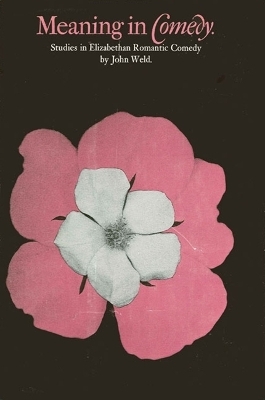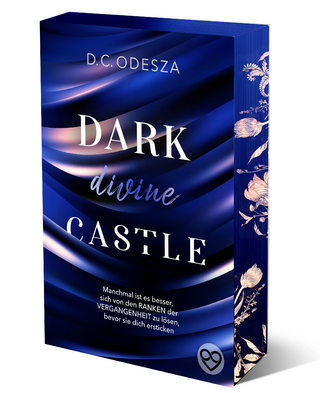
Meaning in Comedy
Studies in Elizabethan Romantic Comedy
Seiten
1975
State University of New York Press (Verlag)
978-0-87395-278-1 (ISBN)
State University of New York Press (Verlag)
978-0-87395-278-1 (ISBN)
- Titel z.Zt. nicht lieferbar
- Versandkostenfrei
- Auch auf Rechnung
- Artikel merken
The festive Elizabethan comedies constitute a unique and dazzling drama, yet they have seldom been studied as a genre, and, except for Shakespeare's plays, they are seldom interpreted. Although successive audiences have found these works delightful, critics at times regard them as rather trivial.
Professor Weld's book, which is based upon a challenging new view of sixteenth-century dramaturgy, results in a new understanding of the plays, and reveals in them a surprising profundity. These interludes and moralities are seen, not as crude transitional dramas of simplistic didacticism and confused technique, but as theatrically vital plays which are both technically sophisticated and semantically complex.
The author defines the dramatic meaning he seeks as the Renaissance audience's understanding of the play, and offers an operational definition of that audience in terms of its knowledge and training. He explores the late medieval use of dramatic metaphor as a device for conveying meaning and shows how during the sixteenth century this device gave rise to a complex linguistic tradition, one from which the late Elizabethan and Jacobean genres developed.
Not the least of these genres is "romantic comedy," a concept that Professor Weld expands considerably. Using common ideas of the time as conceptual tools for interpretation, he demonstrates a generic grouping which includes plays as superficially diverse as Lyly's Mother Bombie, Greene's Friar Bacon, and The Taming of the Shrew. They are linked by certain dramatic metaphors, by philosophical assumptions, and by their common concern to find a modus vivendi with the "absurd flesh."
Our understanding of these romantic comedies has been blurred by the accumulated scholarly traditions and changing acting styles of the last 350 years. In order to discover a clear view of this dramatic form as it was understood by the Elizabethan audience, Professor Weld (who himself has had acting and directing experience) takes factors into account such as the playwrights' actual directions for performance (when such can be found), in order to study the communication of meaning from the Elizabethan playwright to his contemporary and varied audience. While to us, for instance, Hamlet might exemplify the Oedipus Complex and The Comedy of Errors a search for identity and the failure of communication, such "meanings" are by no means those assumed by the intelligent and educated Elizabethan playgoer.
In Part I Professor Weld examines the dramatic traditions with which the audiences of Lyly, Greene, and Shakespeare had been familiar, while in Part II he interprets the comedies themselves. Since all of the dramatic kinds used much the same techniques and were concerned with many of the same themes, the book is also an introduction to the understanding of tragedy, history, and—especially—dramatic satire.
Professor Weld's book, which is based upon a challenging new view of sixteenth-century dramaturgy, results in a new understanding of the plays, and reveals in them a surprising profundity. These interludes and moralities are seen, not as crude transitional dramas of simplistic didacticism and confused technique, but as theatrically vital plays which are both technically sophisticated and semantically complex.
The author defines the dramatic meaning he seeks as the Renaissance audience's understanding of the play, and offers an operational definition of that audience in terms of its knowledge and training. He explores the late medieval use of dramatic metaphor as a device for conveying meaning and shows how during the sixteenth century this device gave rise to a complex linguistic tradition, one from which the late Elizabethan and Jacobean genres developed.
Not the least of these genres is "romantic comedy," a concept that Professor Weld expands considerably. Using common ideas of the time as conceptual tools for interpretation, he demonstrates a generic grouping which includes plays as superficially diverse as Lyly's Mother Bombie, Greene's Friar Bacon, and The Taming of the Shrew. They are linked by certain dramatic metaphors, by philosophical assumptions, and by their common concern to find a modus vivendi with the "absurd flesh."
Our understanding of these romantic comedies has been blurred by the accumulated scholarly traditions and changing acting styles of the last 350 years. In order to discover a clear view of this dramatic form as it was understood by the Elizabethan audience, Professor Weld (who himself has had acting and directing experience) takes factors into account such as the playwrights' actual directions for performance (when such can be found), in order to study the communication of meaning from the Elizabethan playwright to his contemporary and varied audience. While to us, for instance, Hamlet might exemplify the Oedipus Complex and The Comedy of Errors a search for identity and the failure of communication, such "meanings" are by no means those assumed by the intelligent and educated Elizabethan playgoer.
In Part I Professor Weld examines the dramatic traditions with which the audiences of Lyly, Greene, and Shakespeare had been familiar, while in Part II he interprets the comedies themselves. Since all of the dramatic kinds used much the same techniques and were concerned with many of the same themes, the book is also an introduction to the understanding of tragedy, history, and—especially—dramatic satire.
John Weld was educated at Harvard University, and has taught at Harvard and Princeton. He is currently Professor of English, State University of New York at Binghamton.
Acknowledgements.
Introduction.
Part One: Dramatic Tradition.
I. Dramatic Exemplification and Metaphor.
II. Dramatic Metaphor in Moralities and Other Entertainment.
III. Semantic Complexity: Macrocosm and Microcosm.
Part Two: The Plays.
IV. Romantic Comedy: John Lyly.
V. Friar Bacon and Friar Bungay.
VI. The Comedy of Errors.
VII. The Taming of the Shrew.
VIII. A Midsummer Night's Dream.
IX. The Merchant of Venice.
Notes.
Index.
| Erscheint lt. Verlag | 30.6.1975 |
|---|---|
| Zusatzinfo | Total Illustrations: 0 |
| Verlagsort | Albany, NY |
| Sprache | englisch |
| Maße | 152 x 229 mm |
| Gewicht | 762 g |
| Themenwelt | Literatur ► Lyrik / Dramatik ► Dramatik / Theater |
| Geisteswissenschaften ► Sprach- / Literaturwissenschaft ► Sprachwissenschaft | |
| ISBN-10 | 0-87395-278-2 / 0873952782 |
| ISBN-13 | 978-0-87395-278-1 / 9780873952781 |
| Zustand | Neuware |
| Informationen gemäß Produktsicherheitsverordnung (GPSR) | |
| Haben Sie eine Frage zum Produkt? |
Mehr entdecken
aus dem Bereich
aus dem Bereich


